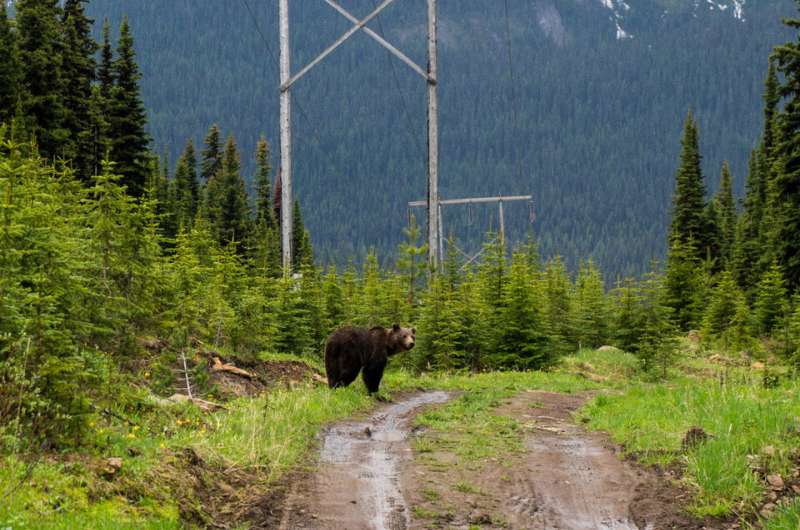July 7, 2020 report
Study shows human-dominated areas are highly lethal to bears until they learn to adapt to people

A team of researchers affiliated with multiple institutions in Canada has found that bears living with people are at high risk of dying until they learn to adapt. In their paper published in Proceedings of the National Academy of Sciences, the group describes their study of data on grizzly bears in British Columbia over a 41-year period and what they learned from it.
In nature, an unarmed human presents little danger to a full-grown bear, especially a grizzly. But when bears begin encroaching on human-dominated lands, they tend to be overwhelmed by weapons, traps and automobiles. In this new effort, the researchers wondered if it might be possible for humans and bears to coexist peacefully in shared lands. To find out, they gathered data from a wide variety of sources that described grizzly bear activity in British Columbia over the years 1979 to 2019.
In all, the researchers found data on 2,669 grizzly bears in a 378,191-km2 part of British Columbia (an area believed to be home to 15,000 grizzlies). It included data describing demographic information for 808 of the bears and also included 474,222 telemetry relocations and 5,867 genetic detections of animals that were marked and tracked.
The researchers found that when bears move into human controlled areas, they suffer much higher mortality rates, especially when young—for every bear that made it to age 14, 29 died, compared to just four in the wilderness. Bears are typically killed when they happen upon humans who call animal control to have them shot. But the researchers also found that as the bears grew older, they learned to adjust their behavior in ways that made them safer, most prominently by increasing the amount of time they spent foraging at night. Over time, the bears were figuring out that people tend to sleep at night, and thus the odds of an encounter were reduced.
The researchers also found that most interactions between humans and bears were the result of bears foraging—they found food in human-occupied areas in the form of roadkill, livestock, landfills and sometimes trash cans. They suggest that if bears are to survive in human-controlled territory, humans will have to adapt by properly fencing landfills and livestock areas and using bear-proof trash containers.
More information: Clayton T. Lamb et al. The ecology of human–carnivore coexistence, Proceedings of the National Academy of Sciences (2020). DOI: 10.1073/pnas.1922097117
Journal information: Proceedings of the National Academy of Sciences
© 2020 Science X Network


















